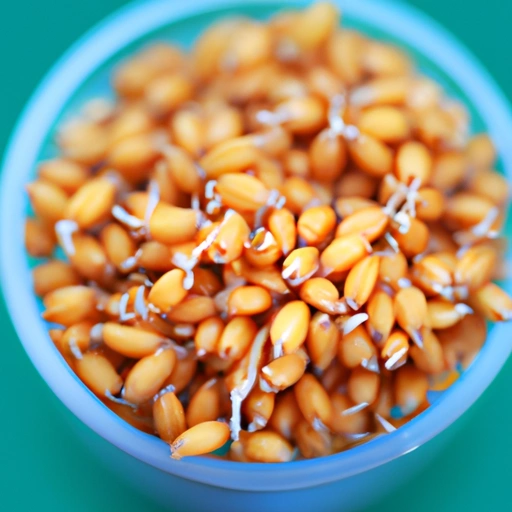Wheat Germ
Description

Wheat germ is the nutrient-rich embryo of the wheat kernel that is removed during the refining process of wheat grains to white flour. It is a concentrated source of vitamins, minerals, and protein, while also being rich in dietary fiber. Wheat germ has a nutty flavor and a slightly grainy texture, making it a versatile ingredient for enhancing the nutritional value of many dishes.
Common uses
Wheat germ is commonly used as a topping for yogurt, cereals, and salads, and can also be incorporated into baked goods, smoothies, and other dishes for an added nutritional boost.
Nutritional value
Calories
Approximately 360 kcal per 100 grams (about 3.5 oz) or around 103 kcal per ounce.
Protein
Contains about 23-30 grams of protein per 100 grams (about 3.5 oz) or roughly 6.5-8.5 grams per ounce.
Fat
Approximately 9-10 grams of fat per 100 grams (about 3.5 oz) or around 2.5-3 grams per ounce, with a mix of unsaturated and saturated fats.
Carbohydrates
Contains about 51-60 grams of carbohydrates per 100 grams (about 3.5 oz) or 14-17 grams per ounce, with a significant portion being dietary fiber.
Vitamins
Rich in B vitamins, particularly folate (B9), thiamin (B1), and vitamin E.
Minerals
Good source of essential minerals such as zinc, magnesium, and phosphorus.
Health benefits
Wheat germ offers a variety of health benefits including supporting heart health, aiding in digestion due to its high fiber content, and providing antioxidant properties from vitamin E. It's also beneficial for skin health and can help in managing blood sugar levels.
Potential risks
While wheat germ is nutritious, it may not be suitable for everyone. Those with wheat allergies, celiac disease, or gluten sensitivity should avoid it. Additionally, wheat germ is high in calories and should be consumed in moderation.
Common recipes
Wheat germ is used to add a nutritional punch to homemade bread, muffins, pancakes, and waffles. It's also a popular addition to protein bars and granola.
Cooking methods
Wheat germ can be toasted for a nuttier flavor or used raw. It can be incorporated into dough or batter, or sprinkled on top of dishes before serving.
Pairing with other ingredients
Combines well with fruits, nuts, honey, and dairy products such as yogurt and milk, making it a great topping or mix-in for breakfast and snack foods.
Summary
Wheat germ is a highly nutritious component of the wheat kernel, offering a bounty of health benefits and versatility in cooking. With its rich historical background and common uses in a variety of culinary applications, it's a valued ingredient for health-conscious consumers and chefs alike.